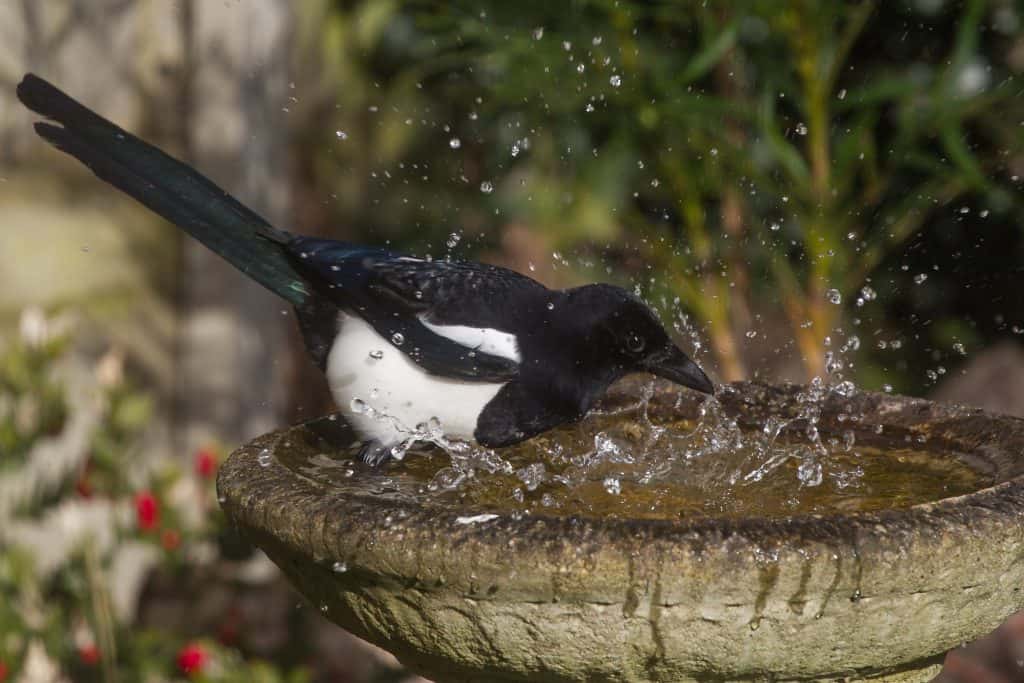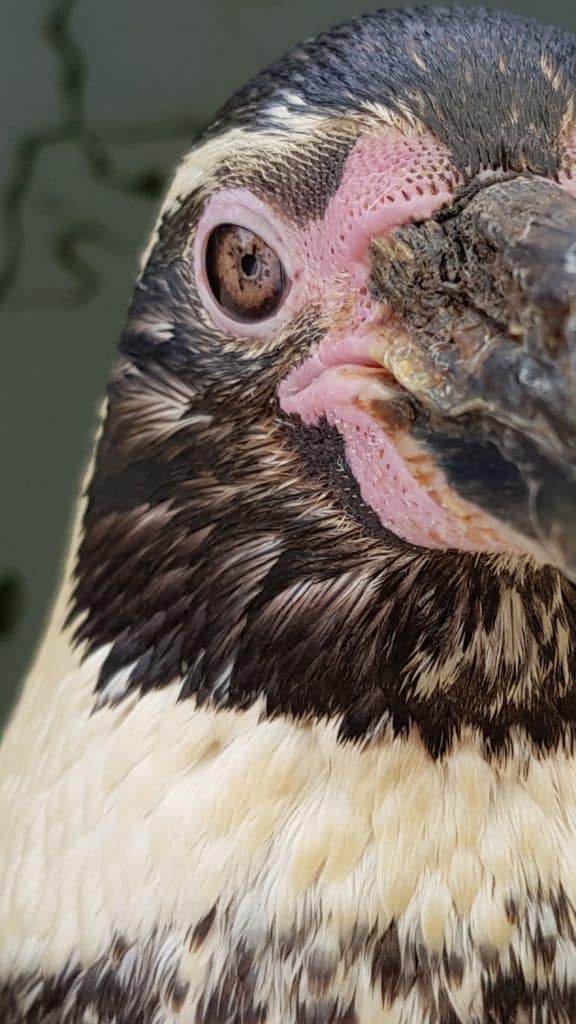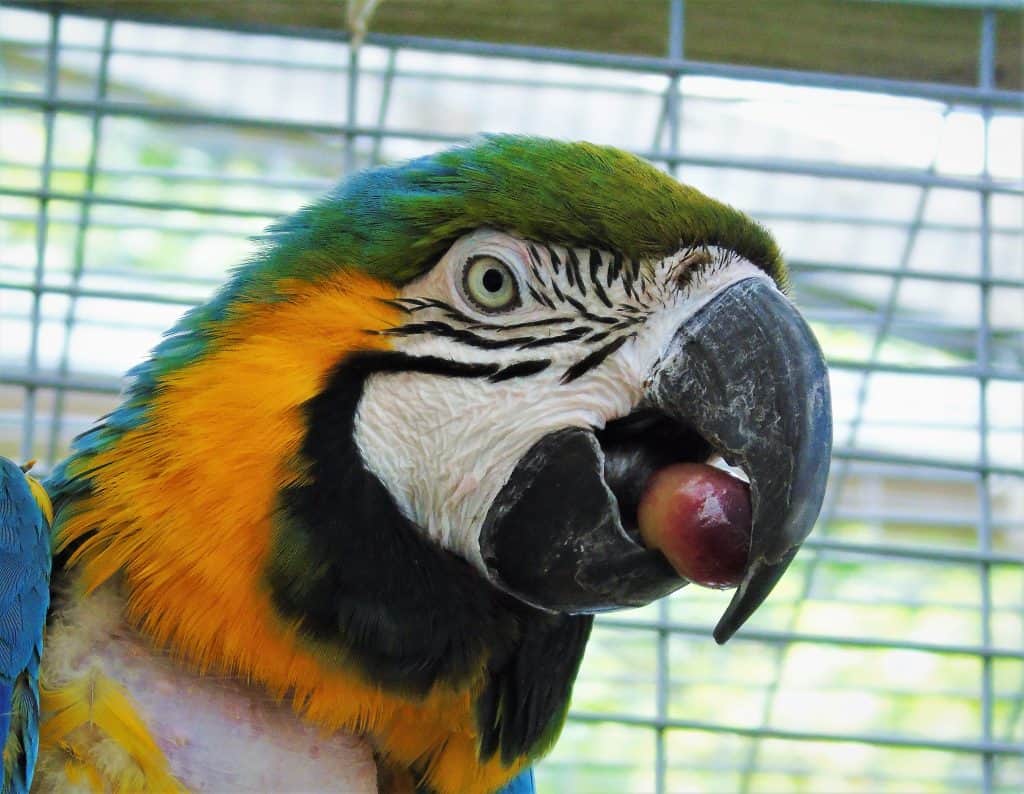As many of you know by now, I think birds are just the coolest. But how have they been coping during this year’s heat wave? If we’re hot then birds are hot too, and my word it has been stifling over the last few weeks! Our dedicated Keepers have been keeping cool at work with cold flannels, cold drinks, lots of sun cream and our trusty hats. Plus, we’ve been treated to ice cream during the hottest periods of the day too. Yum! But whilst we can cool off by running a cold shower or putting ice in front of the fan (no, just me?) birds have different ways of cooling off.
Bathing

Just like us, one of the most obvious ways birds cool down is by taking a dip! It is one of my favourite things to watch birds having a good brush up. I’m addicted! Whether they just have a little paddle, or fully submerge and splash water absolutely everywhere, it puts a massive smile on my face. Just look at these Egyptian Geese having a wash, it’s going absolutely everywhere!
When the weather is continuously hot though, it can be hard for birds to find puddles and other sources of water to bathe in. One of the best ways you can help is to provide a bath for any thirsty birds. In the winter it is just as hard to find water when everything freezes. So, topping up the bird bath with hot water in the winter or breaking the ice every day could help your garden birds survive the season.
From a saucer of water to an ornamental fountain, any source of water would be hugely appreciated by our feathered friends. It is important to regularly change and clean water baths. If you go for this option though they can easily become soiled and dangerous for the birds. If you’re game for a more permanent option, creating a pond with shallow areas for birds to paddle in is a fantastic way to encourage all sorts of wildlife to the garden.
Our birds at the park enjoy a bath too. But some also adore having a shower, especially when it’s hot. One of my favourite jobs on a hot day is to see if any of the parrots fancy coming down for a spray.
Panting
When the temperature really starts to rise, birds can pant to release heat. Some species make use of the old “gular flutter”.
What’s a gular I hear you say? Well word of the day today then is ‘gular’. It is a pouch some birds like herons and cormorants can move using the gular muscles in their throat to carry heat out of the body quickly. Our Pink-backed Pelicans probably have the best example of a gular pouch as they also use theirs to catch fish!

Blushing
One of the most interesting adaptations for keeping cool on the section is found on our Humboldt Penguins. They have a neat adaptation where they can flush the bare skin around their face with hot blood to cool down.
I was surprised that when I was cleaning the Penguins out the day before the hottest day in the UK that they weren’t also panting. They’re seriously well adapted to desert environments coming from the coastlines of Peru and Chile in South America. They can also control the movement of hot blood in their feet and flippers too. Plus, all birds have a counter current system of blood vessels in their feet to further help them conserve or release heat.

Keeping Cool in the Shade
When I walk around the park during the heat of the day, I never see as many birds as when I walk around first thing in the morning or in the evening.
Quite sensibly birds will head for cover and shady areas when conditions are too hot. I think I quite like the idea of a siesta during the hottest part of the day too! Providing shady areas in your garden is a great way to help wildlife stay cool. Also, if you plant a dense bush, you might get lucky enough to have birds nesting in it during the spring as well!

Poop
Any finally, my favourite way that birds can cool down is by pooping themselves! No I’m not just pulling your leg. Some birds do poop on their legs which can help them cool down as the liquid part of the poop evaporates. If you would like the official name for this behaviour it is called “urohydrosis”. There’s a nice word to google!
Our White Storks are a great example of this. They are famous for turning their bright red legs white with poo… a cheaper source of sun cream I suppose!

Special Treat
I hope you enjoyed learning about how birds cope with warmer weather, and how you might be able to help them at home as well. I’ll leave you with a picture of one of our parrots eating a frozen treat. They weren’t impressed at first to find out the grape was frozen, but I’m sure it was refreshing all the same.



